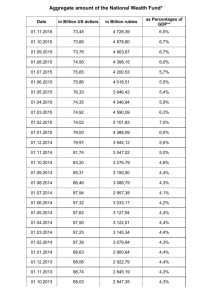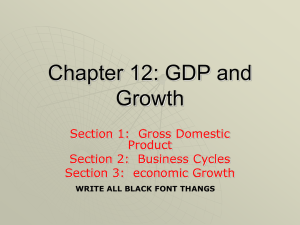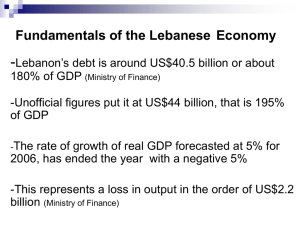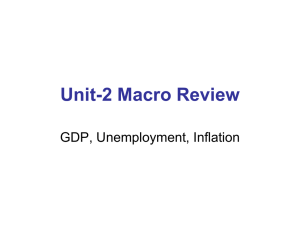The Rise and Fall of modern empires Part I
advertisement
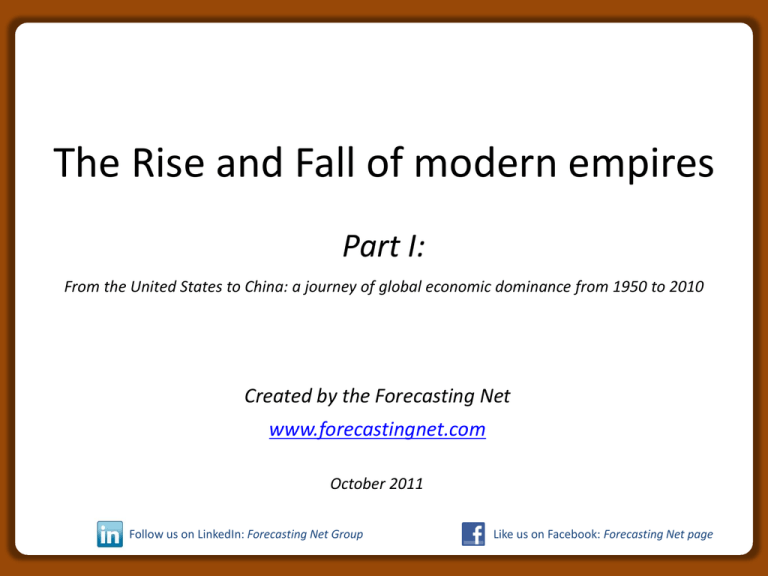
The Rise and Fall of modern empires Part I: From the United States to China: a journey of global economic dominance from 1950 to 2010 Created by the Forecasting Net www.forecastingnet.com October 2011 Follow us on LinkedIn: Forecasting Net Group Like us on Facebook: Forecasting Net page “Everything flows” Heraclitus, Greek philosopher c. 535 – c. 475 BCE China is everywhere in the news today! Continuously challenging the leading economic position of the United States Champion of economic growth, even during the post crisis era, after 2008 Largest shareholder of U.S. debt But it wasn’t always like this… Sixty years ago, in the year 1950… The United States was by far the largest country in the world, in terms of GDP, challenged only by the former Soviet Union (USSR) China was much smaller then, comparable to France in size (GDP), accounting for less than 5% of global economic activity Nobody was talking about China as it was off our “radars” and remained so for quite a long time! So, we ask our selves… Is this shift of power, from the West to the East, just a temporary trend or has the long term balance of power changed? … if so, could we have predicted this? Let’s do the following: We will analyze the past performance of different geographical regions and countries*, between 1950 and 2010, based on the percentage contribution of region/country GDP to global GDP**, depicting the relative economic power of each region/country By doing so, we will try to identify the long term trends that led to this shift of power and also possible early warnings of this change * We have included ten countries: the nine largest existing countries, in terms of 2010 GDP percentage contribution, and also USSR to ensure backward data continuity for the Russian Federation. ** Source of actual GDP data (in millions of 1990 US$, converted at Geary Khamis PPPs) used in this analysis is: “The Conference Board Total Economy Database, January 2011, http://www.conference-board.org/data/economydatabase/” Let’s start! First, let’s see how regions perform Guess what region this is? That’s right, it’s Asia! Regions’ performance in a nutshell Overall, it is clear that the balance of power, in terms of GDP contribution to global GDP, is shifting from the West (Western Europe and North America) to the East (Asia) for more than 50 years Asia is the definite long term winner of this “race”. Starting well behind Western Europe and North America regions, Asia continuously gained ground at the expense of almost every other region in the world, and especially the West The impact of the gradual deterioration and eventually the collapse of the Soviet Union is apparent in the evolution of the Eastern Europe and Central Asia region. The rise of the Russian Federation compensates for some but not all of this decline, especially after the year 2000 Latin America has a slightly upward long term trend, not having though-for the time being-a significant impact on world power balance Middle East shares a similar pattern with Latin America but at a lesser degree of significance Oceania and Africa seem to be “flat-lined” over the years, with the only exception of an emerging upward trend for Africa over the last decade Now, let’s see how countries perform ** ** Included ten countries: the nine largest existing countries, in terms of 2010 GDP percentage contribution, and also USSR to ensure backward data continuity for the Russian Federation. Countries’ performance in a nutshell China and to a lesser degree India are the long term winners of this “race”, in terms of percentage contribution to global GDP per year The continuous long term decrease of the relative economic power-expressed as the percentage contribution to global GDP-of the United States and the largest Western European countries, Germany, United Kingdom, and France, is obvious after 1960 Japan’s end of the economic miracle in the early 1990s resulted to the sharp decline of its contribution to global GDP, after a growth frenzy that lasted many decades The gradual deterioration of the relative economic power of the USSR-after 1960-that led to the collapse of the Soviet Union and the subsequent rise of the Russian Federation, is apparent Brazil’s contribution to global GDP starts to decline after 1980. Some catching up is evident during the last three years following the start of the 2008 credit crunch See where this is going? China is leading the way and India is rising strong, substituting, in terms of global GDP contribution, the traditional top worldwide players: the United States, Western Europe, and Japan So, based on regions/countries contribution to global GDP, the shift of power from the West to the East has been confirmed … and it seems to be a long term trend But could we have predicted this? Let’s pretend we are back to the year 1985… However! 1985: Asia, North America, and Western Europe are almost equal in “size” Guess what happened then? Exactly! Asia grew more than N.America and W.Europe Now, that wasn’t so hard! We didn't have to be either economists or futurists to predict this! All we had to do was use common sense and the truth would have been discovered… Let’s summarize… Asia has been substituting the West, in terms of percentage contribution to global GDP, for many decades, initiating a shift of the international balance of power It all started with Japan’s economic miracle but it really took off with China’s and, to a lesser degree, India’s growth frenzy over the last few decades This is not a temporary but a long term trend that we could have easily identified as early as the 1980s, if only we looked… The Rise and Fall of modern empires Part I: From the United States to China: a journey of global economic dominance from 1950 to 2010 Created by the Forecasting Net www.forecastingnet.com October 2011 Follow us on LinkedIn: Forecasting Net Group Like us on Facebook: Forecasting Net page Coming soon The Rise and Fall of modern empires Part II: A world of inequality: per capita income evolution in developed and developing regions and countries


